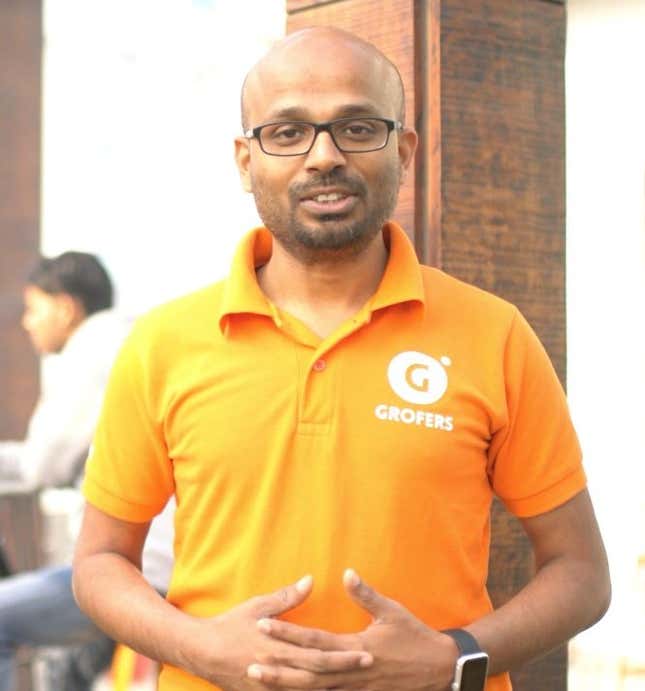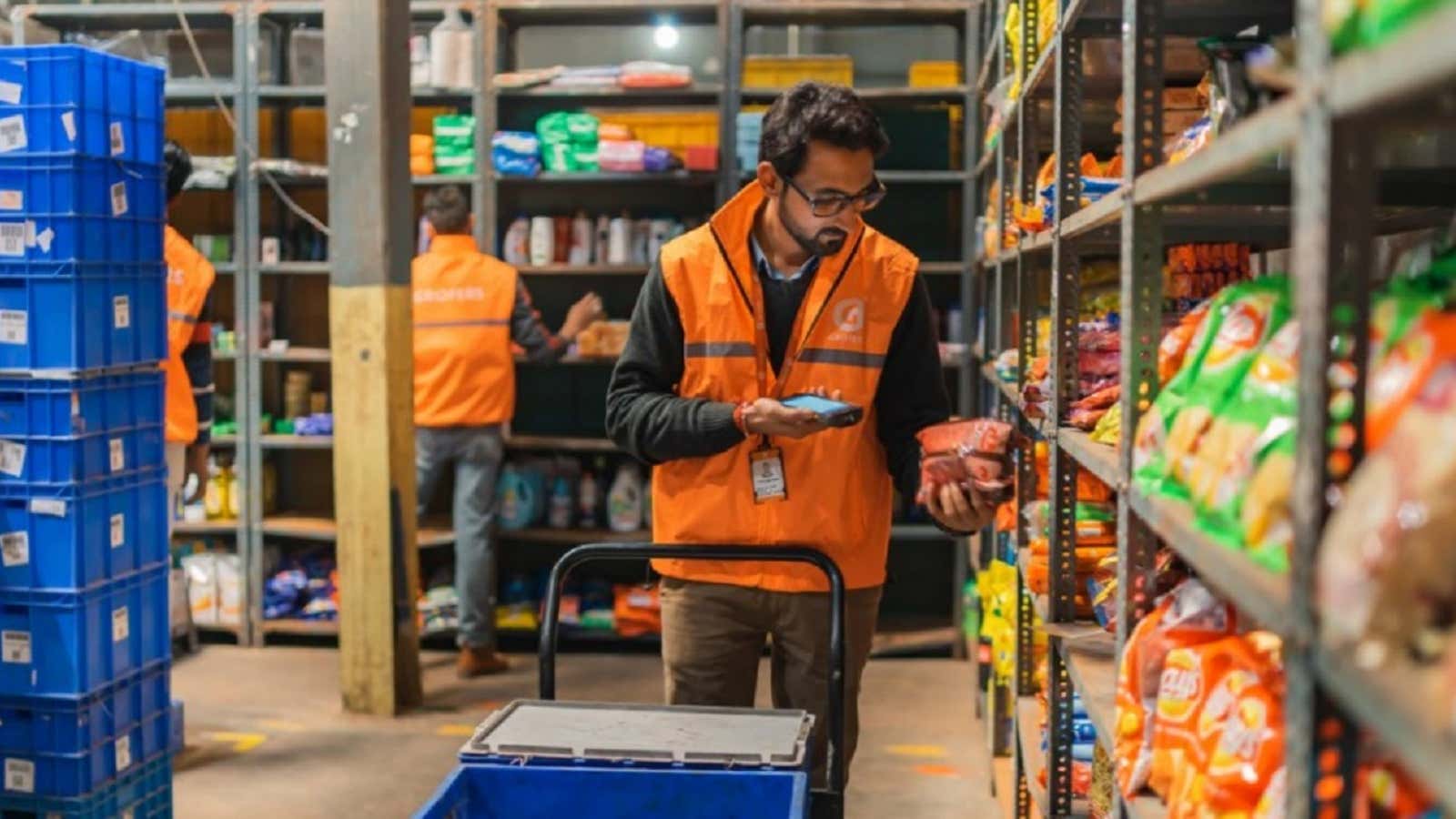Online supermarket Grofers is riding full-throttle into 2020 on the momentum gathered from small-town India.
Earlier this month, the Softbank-backed company had said it now has a presence in 27 cities as compared with 14 earlier. The cities where Grofers launched in 2019 include Vadodara, Meerut, Rohtak, Panipat, Agra, and Durgapur. The company has said that it now has a customer base of four million and a network of 6,500 stores on its platform.
This expansion spree comes on the back of new-found confidence that has stemmed from achieving breakeven in Kolkata and Delhi. “Building on our success in bigger markets, we have expanded into peripheral areas surrounding our key markets,” Grofers co-founder Saurabh Kumar told Quartz India.
With the expansion announced this month, Grofers estimates its gross merchandise value (GMV, or the value of goods sold through a marketplace) to expand by 25% to Rs5,000 crore by March 2020.
“We have been focusing on increasing density (presence) by expanding our store partner network. More store partners in an area mean that each one of them has to cover (a) lesser distance for making deliveries thereby bringing down the last-mile logistics cost. More store partners also result in servicing of (b) higher number of orders in an area,” said Kumar.
In an interview with Quartz, Kumar talks about the business opportunity that lies in tier-2 and tier-3 cities and the challenges of catering to small towns. Edited excerpts:
How significant is Grofers’s expansion into tier-2 and tier-3 cities?
Getting into new cities such as Vadodara, Agra, and Meerut has helped us expand our addressable market by 50%. All these markets are within 100-150km of cities that we already operate in. These expansions have come at a low-cost as we are using our existing warehousing and delivery network to service our new markets. Our store partners take care of last-mile delivery in the markets which we have just launched. In the new markets that we have ventured into, we have on average on-boarded 20 to 30 store partners in each city.
How do you choose the cities you expand into?
Expansion into new territories has been an outcome of how well we have been doing in our existing cities. Before expanding into new cities, we have first focused on making some of our existing markets profitable. Grofers achieved breakeven in Delhi in August this year, and we have reached the same milestone in Kolkata this month.
As we expand, we will source supplies from our bigger markets. For example, we are present in neigbouring markets of Delhi, such as Noida and Manesar.
What is Grofers’ business strategy in the new markets?

We have always stood for discounts. Our brand promise is ensuring savings for consumers. Our target group is middle-and lower middle-class buyers, who value savings. The focus all along has been on offering lower prices to customers even with a limited assortment. And that explains why we have done well in areas like east Delhi, Noida, Manesar, and Agra. If one moves a little further away from Delhi, in smaller cities, customers value savings far more than convenience and time saved on making a purchase. In new markets, too, we will push our private label brands as they are 15-20% cheaper than other brands.
How similar or dissimilar are consumer behaviours and buying patterns in smaller cities as compared with metros?
Most of the new cities that we have expanded into more or less exhibit buying behaviour similar to our existing bigger markets. We do look at the kind of local brands or stock keeping units (SKUs) that people in each market prefer to buy. Some of the preferred brands may vary city by city. But basket size and frequency of purchase in markets where we have just launched more or less remains the same for us.
For example, the average ticket size in the newly launched markets is around Rs1,000. This compares well with the average ticket size of Rs1,300 in cities such as Delhi. Frequency of purchase stands at two orders per customer per month.
What are the key challenges before Grofers in the new markets?
In smaller cities, people are used to buying groceries offline. Therefore, in the new cities, the focus is on building the category by creating awareness around buying grocery online as it is cheaper. In metros, courtesy competition awareness about making grocery purchases online is already there. Here, the focus is on encouraging buyers to try Grofers.
In smaller cities, communication is about inspiring buyers to try out Grofers by highlighting the advantages that we offer. We encourage our store partners to reach out to buyers through vernacular advertisements and hoardings.
Grofers is sitting on vast consumer data. How are you leveraging that?
We are a technology-based company. The company uses data to look at how many people are looking up for Grofers in existing as well as new markets that we plan to launch into. We track city-wise purchases to identify which are the brands and products that buyers are looking for the most. The team also uses data to compare purchase baskets of buyers across cities. All this helps us in determining the most popular products selling on our platform and the brands that can be pushed further. Our communication (advertising and marketing strategy) is also driven by data-led insights.
